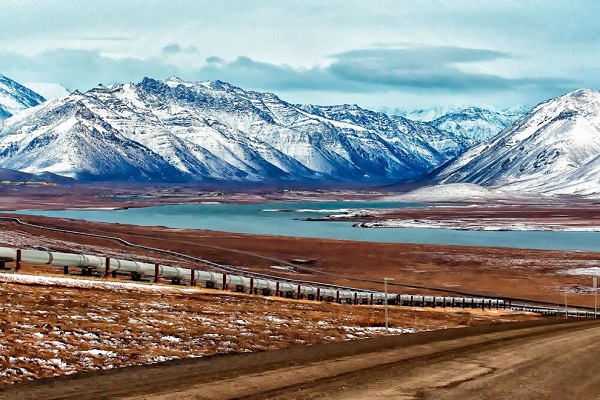Alberta
Alberta, Saskatchewan and Manitoba “Taking the lead on new nation-building projects”

Taking the lead on new nation-building projects
Alberta, Saskatchewan and Manitoba have signed an agreement to collaborate on joint economic corridor projects to boost trade and economic growth.
The signing of a memorandum of understanding between the governments of Alberta, Saskatchewan and Manitoba will foster the development of new economic corridors across the three provinces. This groundbreaking partnership aims to bolster economic growth and collaboration while strengthening the region’s position as a key player in the global market.
“Alberta is proud to partner with Saskatchewan and Manitoba, taking a leadership role in building new trade corridors that will help our provinces and our country. New nation-building projects need government cooperation and political will. We need to cut red tape. We need to get building things like we used to. We need to make good jobs and an affordable life a priority. We can start to show people that, yes, Canada is a place you can do business again.”
“The world needs what Saskatchewan has to offer. We rely on dependable, robust road, rail, air and port networks to ship our food, fuel and fertilizer across North America and around the globe.”
“Manitoba’s unique gateway and hub initiatives cannot develop in isolation, that is why external cooperative partnerships will leverage our initiatives for success. With similar trade and transport access such as distance to markets, reliance on international ports and railway services, and similar commodity basis, Saskatchewan and Alberta are natural key partners to work with on improving trade enablement through transportation.”
In its earliest days, Canada was united by nation-building economic projects such as the transcontinental railway, which tied the country together through improved travel and trade.
Over the last decade, regulatory uncertainty, anti-development policies and a lack of national leadership have cost provinces an opportunity to pursue projects that would have created thousands of jobs and billions of dollars in growth and investment.
The three provincial governments will work together to eliminate regulatory inefficiency and uncertainty to attract and develop nation-building projects. Alberta, Saskatchewan and Manitoba will coordinate to identify and prioritize strategic infrastructure that will enhance trade and transportation between the provinces and around the world. Through this, new economic corridors will be built to support the movement of critical resources, energy and utility projects, and secure national supply chains.
Quick facts
- The agreement will focus on enhancing critical infrastructure, improving the efficiency of interprovincial transportation networks and reducing regulatory hurdles. It will also identify opportunities to attract private sector investment and partner with Indigenous communities on economic corridor development.
- Economic corridors link markets in and out of Alberta, supporting the province’s economic, social and environmental activity.
- Economic corridors can involve a broad range of infrastructure, including transportation, energy, power, telecommunications and other utilities.
- In addition to physical infrastructure, corridors include service markets and the coordination of regulations and policies across multiple jurisdictions and sectors.
- According to Statistics Canada, Alberta exported more than $138 billion in goods in 2021.
- This includes goods shipped by pipeline and other modes, such as road, rail, air and marine.
- Non-pipeline exports of goods totalled more than $48 billion.
- Alberta Transportation and Economic Corridors will work and proactively partner with Indigenous communities to plan economic corridors for mutual economic benefit.
Alberta
Alberta government should eliminate corporate welfare to generate benefits for Albertans

From the Fraser Institute
By Spencer Gudewill and Tegan Hill
Last November, Premier Danielle Smith announced that her government will give up to $1.8 billion in subsidies to Dow Chemicals, which plans to expand a petrochemical project northeast of Edmonton. In other words, $1.8 billion in corporate welfare.
And this is just one example of corporate welfare paid for by Albertans.
According to a recent study published by the Fraser Institute, from 2007 to 2021, the latest year of available data, the Alberta government spent $31.0 billion (inflation-adjusted) on subsidies (a.k.a. corporate welfare) to select firms and businesses, purportedly to help Albertans. And this number excludes other forms of government handouts such as loan guarantees, direct investment and regulatory or tax privileges for particular firms and industries. So the total cost of corporate welfare in Alberta is likely much higher.
Why should Albertans care?
First off, there’s little evidence that corporate welfare generates widespread economic growth or jobs. In fact, evidence suggests the contrary—that subsidies result in a net loss to the economy by shifting resources to less productive sectors or locations (what economists call the “substitution effect”) and/or by keeping businesses alive that are otherwise economically unviable (i.e. “zombie companies”). This misallocation of resources leads to a less efficient, less productive and less prosperous Alberta.
And there are other costs to corporate welfare.
For example, between 2007 and 2019 (the latest year of pre-COVID data), every year on average the Alberta government spent 35 cents (out of every dollar of business income tax revenue it collected) on corporate welfare. Given that workers bear the burden of more than half of any business income tax indirectly through lower wages, if the government reduced business income taxes rather than spend money on corporate welfare, workers could benefit.
Moreover, Premier Smith failed in last month’s provincial budget to provide promised personal income tax relief and create a lower tax bracket for incomes below $60,000 to provide $760 in annual savings for Albertans (on average). But in 2019, after adjusting for inflation, the Alberta government spent $2.4 billion on corporate welfare—equivalent to $1,034 per tax filer. Clearly, instead of subsidizing select businesses, the Smith government could have kept its promise to lower personal income taxes.
Finally, there’s the Heritage Fund, which the Alberta government created almost 50 years ago to save a share of the province’s resource wealth for the future.
In her 2024 budget, Premier Smith earmarked $2.0 billion for the Heritage Fund this fiscal year—almost the exact amount spent on corporate welfare each year (on average) between 2007 and 2019. Put another way, the Alberta government could save twice as much in the Heritage Fund in 2024/25 if it ended corporate welfare, which would help Premier Smith keep her promise to build up the Heritage Fund to between $250 billion and $400 billion by 2050.
By eliminating corporate welfare, the Smith government can create fiscal room to reduce personal and business income taxes, or save more in the Heritage Fund. Any of these options will benefit Albertans far more than wasteful billion-dollar subsidies to favoured firms.
Authors:
Alberta
Official statement from Premier Danielle Smith and Energy Minister Brian Jean on the start-up of the Trans Mountain Pipeline

-

 Alberta2 days ago
Alberta2 days agoAlberta government should eliminate corporate welfare to generate benefits for Albertans
-

 Economy2 days ago
Economy2 days agoOttawa’s homebuilding plans might discourage much-needed business investment
-

 Opinion2 days ago
Opinion2 days agoClimate Murder? Media Picks Up Novel Legal Theory Suggesting Big Oil Is Homicidal
-

 Energy2 days ago
Energy2 days agoHouses passes bill to protect domestic oil production, protect Iñupiat community
-

 Energy1 day ago
Energy1 day agoNet Zero’s days are numbered? Why Europeans are souring on the climate agenda
-

 Opinion1 day ago
Opinion1 day agoQuebec’s ban on gender-neutral bathrooms in schools is good news
-

 Energy1 day ago
Energy1 day agoBiden Has Taken More Than 200 Actions Against Domestic Oil, New Report Says
-

 Opinion1 day ago
Opinion1 day agoMisleading polls may produce more damaging federal policies








